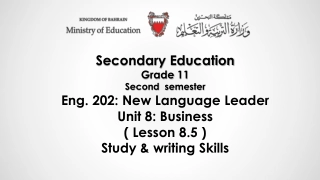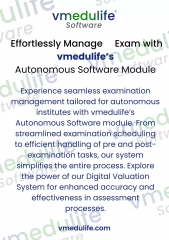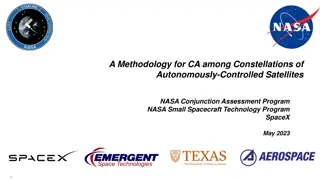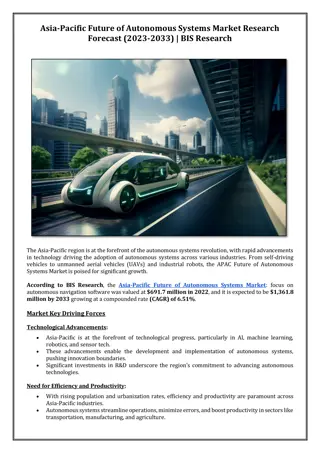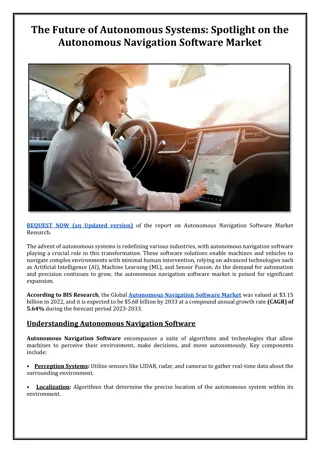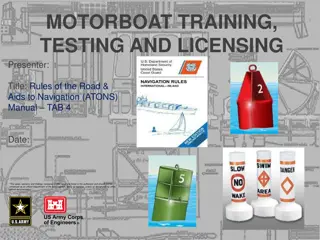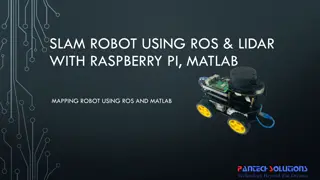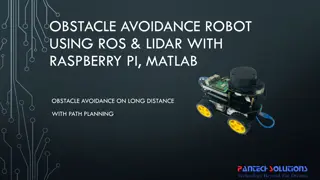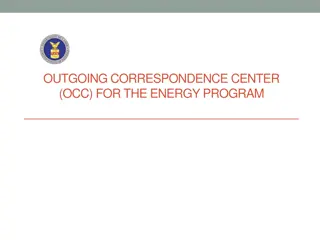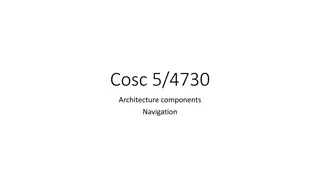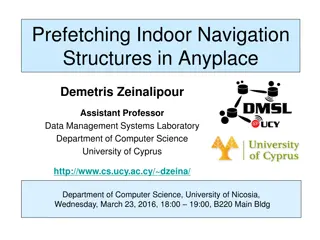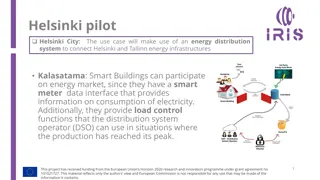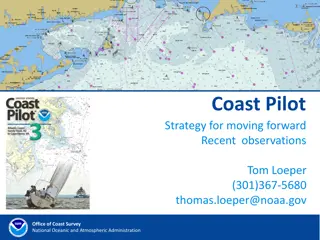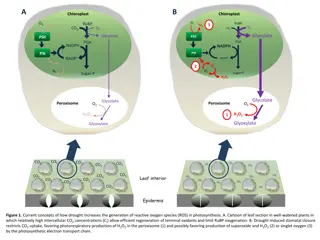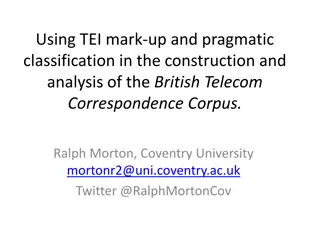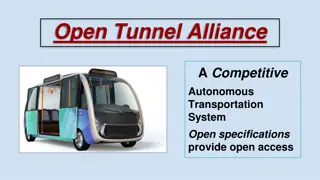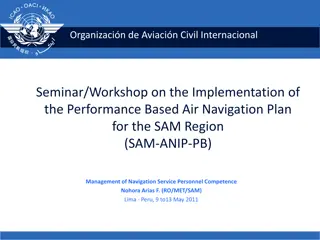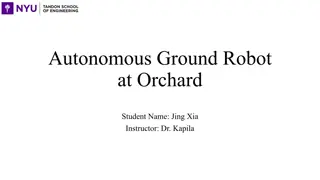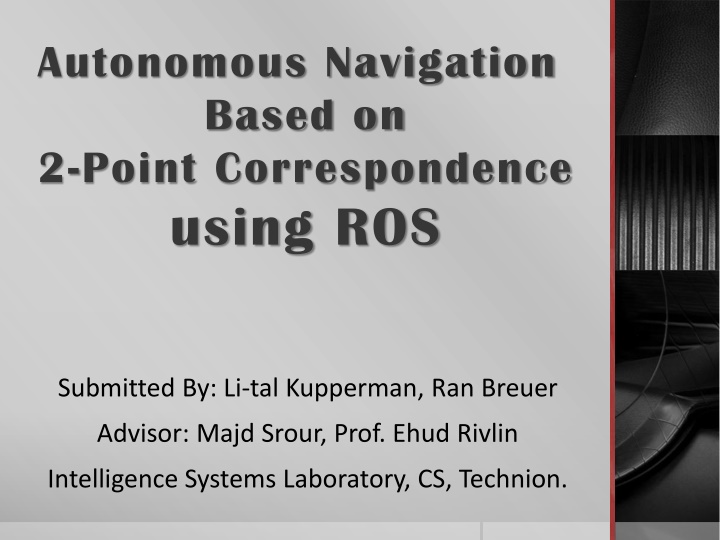
Advanced Autonomous Robot Navigation Using Visual Tools
Explore groundbreaking research on autonomous robot navigation leveraging 2-point correspondence and advanced algorithms based on ROS. Discover how this innovative approach enables precise navigation in unknown indoor planar environments using only visual information.
Download Presentation

Please find below an Image/Link to download the presentation.
The content on the website is provided AS IS for your information and personal use only. It may not be sold, licensed, or shared on other websites without obtaining consent from the author. If you encounter any issues during the download, it is possible that the publisher has removed the file from their server.
You are allowed to download the files provided on this website for personal or commercial use, subject to the condition that they are used lawfully. All files are the property of their respective owners.
The content on the website is provided AS IS for your information and personal use only. It may not be sold, licensed, or shared on other websites without obtaining consent from the author.
E N D
Presentation Transcript
Autonomous Navigation Based on 2-Point Correspondence using ROS Submitted By: Li-tal Kupperman, Ran Breuer Advisor: Majd Srour, Prof. Ehud Rivlin Intelligence Systems Laboratory, CS, Technion.
The Problem Robot navigation to a given target using only visual tools, in an unknown indoor planar environment. The target is given as an image, taken from the target pose.
The Method At each step, a picture is captured from the current position of the robot. The new picture is being compared to the target picture. The Algorithm computes the rotation and translation to the target pose
What Makes it So Unique We use a special structure of the Essential Matrix for a planar scene. Using only 2-point correspondence Precision and numerical stability
Background Epipolar Geometry Epipolar Point Epipolar Line Homography Essential Matrix
Homography 3x3 matrix. Describes the relation between a plane and an image of the plane. One image Warping and rotating the image, to be correlated with the plane. Two images Describes how 2 images are related to one another, by mapping epipolar lines.
Essential Matrix 3x3 matrix. Relates corresponding points in two images. Calibrated version of the Fundamental matrix. P EP= T , where P ,P are two points in the images. ' 0 Useful for determining the translation and rotation between two images. The rotation matrix can be fully recovered. Translation up to a scale
Essential Matrix in Planar Model Movement is limited to plane Rotation around Y axis only Rotation matrix & Translation vector - X Z
Essential Matrix in Planar Model Where ? = ????? and ? = ?????. We reduce the essential matrix to this structure
Program Workflow Input : Target image. 1. Capture an image from the current pose. 2. Extract and match features from both images. 3. Filter the largest inliers set using PROSAC. 4. Using the best model estimated, extract matrices R and T. 5. Calculate the distance to target. 6. Move to a new pose and repeat step 1 until target pose is reached.
Starting position & correspondence Finding a good starting point Scanning and covering 360 of the room. Finding correspondence Using SIFT method and Brute force matching Eliminate bad matches
Estimating E Estimating the Essential Matrix Only 2 point correspondence to estimate E. Using a variation of PROSAC. Finding the largest inlier set that agree with E.
Estimating E (Cont.) Estimating the Essential Matrix (cont.) Linear equation matrix Ax = 0: Where Constrained version
Estimating E (Cont.) Estimating the Essential Matrix (cont.) Unit circle and ellipse intersection Using SVD. Possible results: 2 (or 4) intersection points - use for our E. No intersection points no solution. Infinite number of points Pure Rotation.
Whats the next step? Pure Rotation Robot at target, but wrong orientation. Calculating Distance With the help of a third image. 2 Methods implemented: Triangle Cross ratio
Design and Implementation Using ROS nodes to communicate between modules, the robot and the camera. Auto Navigator main module. Robot Controller Image Capturer + Undistorted Epipolar Solver
Using ROS Based on Nodes services. subscribe or publish from\to a Topic. ROSARIA controlling the robot. Axis Camera photo stream, capturing images.
Challenges Eliminating bad images Algorithm divergence near target (Triangle method) Computing distance to target Restarting after bad step Algorithm troubles with a dominant plane
Experimental Test Results Convergence : 3-8 iterations, 1-20cm from target. Triangle method algorithm diverges when close to target. Comparing distance calculation method
Target VS. The End Target End
Measurables Distance to target by iterations
Measurables ? Difference in orientation
Summary Vision based navigation can deduce orientation and distance using: Feature matching Essential Matrix Planar movement Unique Essential Matrix structure. 2-point correspondence. The algorithm quickly converges close to the target pose + orientation.
Future Work Solving divergence at target pose. Better elimination of bad image sources (wrong poses). Qualifier for better matches and features for a more efficient estimation each step. Solve issue with dominant plane scene

